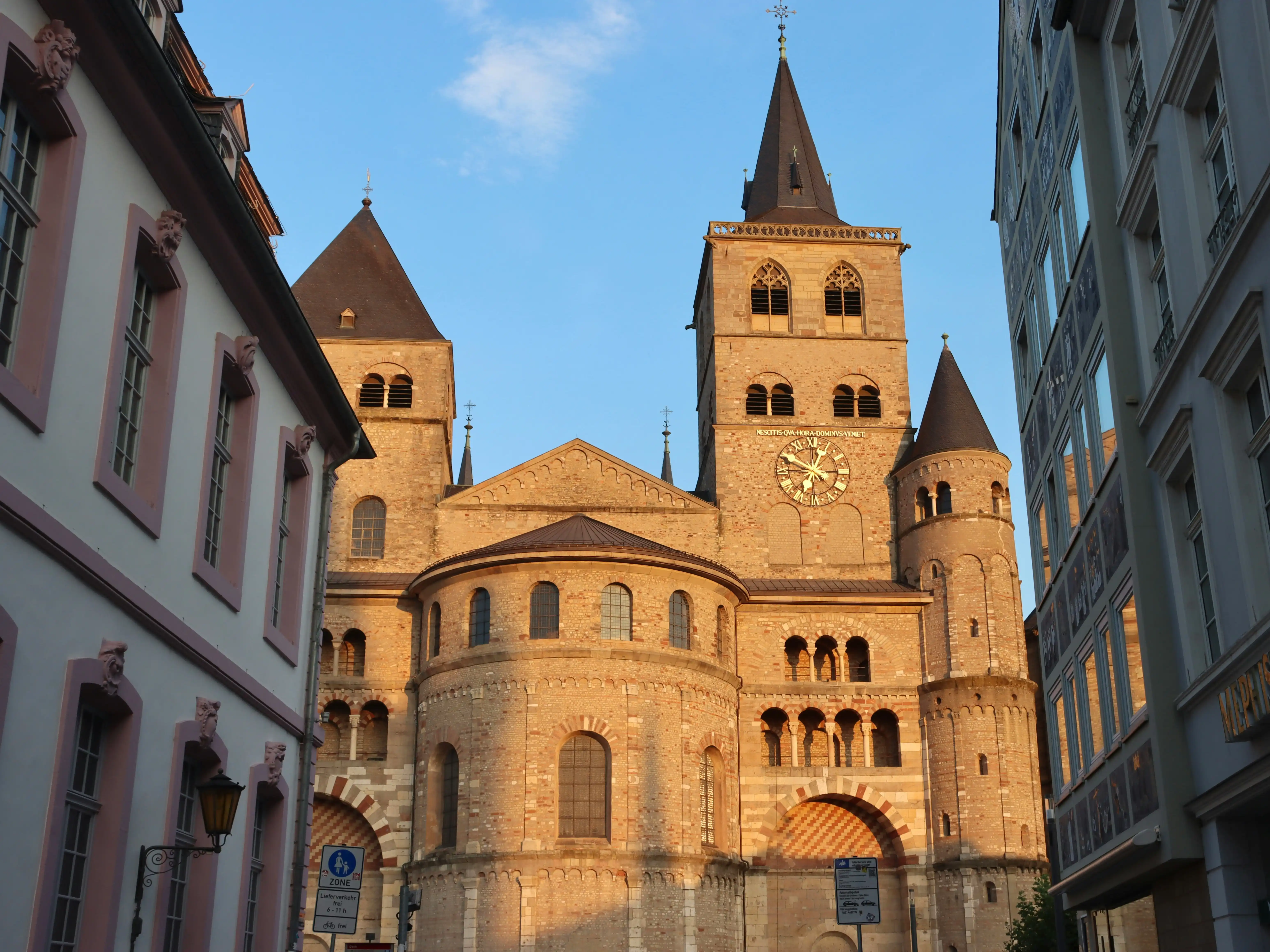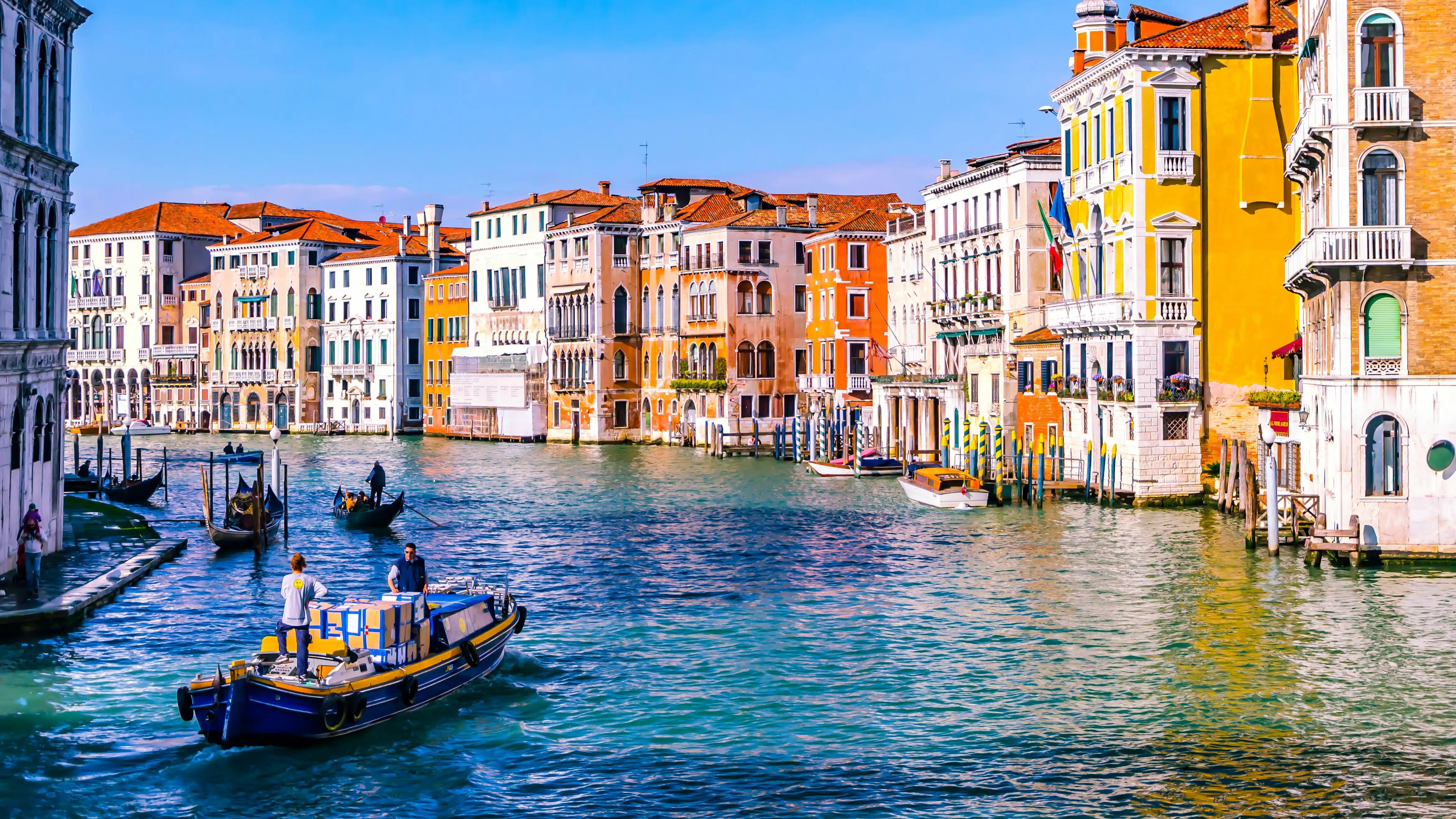.webp&w=3840&q=75)
13 Best Things to Do in the Moselle Valley on A Germany Cruise
The Moselle Valley, or Mosel Valley as it’s known in Germany, is one of Europe’s most enchanting river regions. Nestled between forested hillsides and terraced vineyards, this scenic destination offers more than just postcard-perfect landscapes. From ancient Roman relics to fairy-tale castles and world-renowned Riesling vineyards, the Moselle Valley is a must-visit for anyone planning a cultural holiday in Germany or a wine-themed river cruise.

Best Things to See and Do in the Moselle Valley, Germany
Step Back in Time in Historic Trier – Germany’s Oldest City
No visit to the Moselle Valley is complete without exploring Trier, widely recognized as Germany’s oldest city. A guided tour of Trier immerses you in its Roman imperial past, showcasing no fewer than eight UNESCO World Heritage Sites. The most iconic is the Porta Nigra, a towering Roman city gate that still dominates the town’s skyline.
Don’t miss the Aula Palatina (Basilica of Constantine), built during the reign of Emperor Constantine. Today, it stands as one of the best-preserved Roman buildings outside Italy and showcases an awe-inspiring imperial throne room.
Wander the Old Town and Architectural Landmarks
Trier’s charming Altstadt (Old Town) is a joy to explore on foot. Hauptmarkt, the city’s central market square, is surrounded by medieval townhouses, lively cafés, and boutique shops. Look out for the Steipe Building, with its intricate façade and Gothic detailing.
For those interested in political history, a stop at the Karl Marx House Museum is essential. Located in the philosopher’s birthplace, the museum traces his life, revolutionary ideas, and global legacy.

Kick Back in Koblenz – Where the Moselle and Rhine Rivers Meet
Perched at the scenic confluence of the Moselle and Rhine Rivers, Koblenz is one of Germany’s oldest and most picturesque cities. With a history stretching back over 2,000 years, this riverside gem offers the perfect blend of cultural heritage, relaxed charm, and panoramic views – a highlight of any Moselle River cruise itinerary.
Strolling through Koblenz’s historic city center reveals a patchwork of cobbled lanes, elegant town squares, and lovingly restored Renaissance and Baroque façades. The pace here mirrors the gentle rhythm of life on the river – unhurried, peaceful, and endlessly photogenic.
Discover German Corner and Architectural Gems
A short walk from the Old Town leads you to the iconic Deutsches Eck (German Corner), the symbolic meeting point of the Rhine and Moselle rivers. This dramatic headland is crowned by an equestrian statue of Emperor Wilhelm I and offers one of the best photo ops in Koblenz.
Just steps away is the Basilica of St. Castor (Kastorkirche), the oldest church in the city. Dating back to the 9th century, this Romanesque landmark features vaulted ceilings, centuries-old frescoes, and a quiet courtyard perfect for a reflective pause.

Ride the Cable Car to Ehrenbreitstein Fortress
For unforgettable views over the Upper Middle Rhine Valley, hop aboard the Koblenz cable car and ascend to the Ehrenbreitstein Fortress – one of Europe’s largest hilltop fortifications. Overlooking the river junction from high above, the fortress offers panoramic views, historical exhibitions, and a unique perspective on the UNESCO-listed Rhine Gorge.
Whether you’re enjoying a slow travel experience on a Rhine-Moselle river cruise or visiting Koblenz independently, this charming city invites you to relax, explore, and soak in the natural and historical richness of the region.
Visit the Fairy-Tale Eltz Castle – A Hidden Gem of the Moselle Valley
Tucked within the dense forests above the Moselle River, Burg Eltz (Eltz Castle) is a must-see for lovers of medieval history and fairy-tale architecture. Just a 30-minute drive from Koblenz, this remarkably preserved 12th-century castle has been owned by the same family for over 850 years – an extraordinary feat in European aristocratic history.
Unlike many castles in Germany, Eltz Castle survived untouched by war, leaving its 800-year-old interiors, antique furniture, medieval armory, and treasure-filled vaults perfectly intact. Guided castle tours (about 40 minutes) provide fascinating insight into feudal life, and English-speaking tours are readily available. If you’re looking to avoid the crowds, plan your visit before 11:00 AM or after 3:00 PM.

Hike Through Eltz Forest – Romantic or Adventurous Trails
The castle is surrounded by the enchanting Eltz Forest, part of a designated nature reserve ideal for walkers and photographers. You can access several well-marked trails:
- The Romantic Route: A scenic 35-minute trek through lush greenery with castle views.
- The Dream Path (Traumpfad Eltzer Burgpanorama): A more ambitious 5-hour hike offering panoramic vistas, woodland charm, and the sense of a journey back in time.
Both routes offer a peaceful contrast to the busier towns along the river, making them ideal for slow travel enthusiasts.
Go Wine Tasting in Bernkastel – The Heart of Moselle Wine Country
No trip to the Moselle Valley is complete without a visit to Bernkastel-Kues, the crown jewel of Germany’s Riesling wine region. Set along a picturesque bend in the river, this twin town is surrounded by steep, vineyard-clad hills where grape cultivation dates back to Roman times. The slate-rich soil and temperate climate make this area ideal for producing crisp, aromatic Moselle Rieslings.
If you visit in late August or early September, don’t miss the Bernkastel-Kues Wine Festival – one of Germany’s oldest and most beloved wine events, complete with parades, fireworks, and endless tastings.

Explore the Medieval Charm of Bernkastel-Kues
Aside from wine, Bernkastel-Kues is steeped in storybook charm and historic architecture. Top things to see include:
- The Pointed House (Spitzhäuschen): Built in 1416 by a wine merchant, this half-timbered wonder is the most photographed building in town and even houses a cozy wine tavern.
- St. Michael’s Church: A 14th-century Gothic church perched dramatically above the Moselle River, with a quiet, contemplative interior.
- St. Nicholas' Hospital and Library (Cusanusstift): Located across the bridge in Kues, this 15th-century complex, founded by Nicholas of Cusa houses one of the world’s most valuable collections of medieval manuscripts. Subjects range from theology and astronomy to medicine and law.
Be Captivated by Cochem – The Romantic Heart of the Moselle Valley
Perched on one of the most scenic stretches of the Moselle Valley, Cochem is a charming riverside town long celebrated as the traditional hub of the Moselle wine trade. Its postcard-perfect streets are lined with pastel-colored half-timbered houses, medieval fortifications, boutique shops, and family-run wine taverns. At the heart of the Altstadt (Old Town) lies the picturesque marketplace, where the historic Rathaus (Town Hall) adds to the fairy-tale charm.
.webp&w=1080&q=75)
Explore Reichsburg Castle – A Neo-Gothic Masterpiece
Cochem’s crown jewel is undoubtedly Reichsburg Castle, a hilltop fortress towering above the town. With origins dating back over 1,000 years, the castle has endured sieges, conquests, and near destruction before being lovingly restored in the 19th-century Romantic style.
Visitors can explore the richly decorated Knights’ Hall, the ornate Trophy Room, and the castle courtyards on a 40-minute guided tour. English-language group tours run hourly during the summer season, starting at 10:30 AM. A convenient shuttle bus makes the steep journey from the town center easy, though the walk rewards you with breathtaking views of the Moselle River and surrounding vineyards.
Discover Traben-Trarbach – The Jewel of Central Moselle
Straddling both banks of the Moselle, Traben-Trarbach is often referred to as the jewel of the Central Moselle. In the late 19th and early 20th centuries, it was one of the world’s most important wine trading centers, rivaling Bordeaux in reputation. Today, its historic wine cellars are still in use, with a magical twist: every December they are transformed into the Traben-Trarbach Underground Christmas Market, a unique winter wonderland of crafts, mulled wine, and festive cheer.
Stroll Through Art Nouveau Streets and Historic Landmarks
The town is also a delight for lovers of Art Nouveau (Jugendstil) architecture, with elegant villas and merchant houses designed by acclaimed Berlin architect Bruno Möhring. Among the highlights are:
- Brückentor (Bridge Gate): a striking city gate spanning the Moselle, blending medieval flair with Jugendstil design.
- Böcking House (Haus Böcking): an 18th-century baroque mansion turned museum, once frequented by Prussian kings and literary giant Johann Wolfgang von Goethe.
Articles for you

Explore the Heart of Europe with a Scenic Cruise Through Belgium
After nearly a decade of exploring France’s scenic canals, we’re excited to chart a fresh course for 2025 — this time through the tranquil waterways of Belgium. Starting April 2025, the MS Raymonde will launch a brand-new itinerary, cruising for the first time through the charming canals of Wallonia and Flanders, two culturally rich regions in the heart of Western Europe.
Meanwhile, the elegant MS Lafayette will guide you on an unforgettable river journey, beginning in Brussels and ending at the iconic Kinderdijk windmills in the Netherlands, a UNESCO World Heritage Site.
Belgium's intricate network of rivers and canals offers a peaceful and picturesque way to explore the country's historic towns, medieval architecture, and world-class cuisine. Whether you choose a slow-paced barge cruise or an intimate riverboat experience, this is a unique opportunity to immerse yourself in the hidden beauty of Northern Europe.
In this article, we’ll take you through the most captivating towns and scenic highlights you can enjoy aboard our Belgian canal cruises — from storybook villages and Gothic cathedrals to local breweries and bustling markets.

Why a Solo Cruise is the Best Way to Explore the World?
Solo travel is gaining popularity across the globe, appealing to adventurers of all ages. Yet for many first-timers, the idea of exploring the world alone can feel overwhelming. That’s where CroisiEurope steps in.
With years of experience in European river cruises and small ship voyages, CroisiEurope makes solo cruising simple and stress-free. From curated excursions to full-board comfort, everything is designed to remove the usual worries of solo travel, so you can focus on what matters most: discovery, connection, and peace of mind.

6 Iconic Attractions to Explore in Venice, Italy’s Floating City
Few places in the world stir the soul quite like Venice. Elegant, timeless, and unlike anywhere else, this city built on water is more than just a destination; it’s an experience.
I recently had the pleasure of returning to La Serenissima on a Po River cruise, and once again, Venice captured my heart. Despite having explored countless cities across Europe and beyond, Venice remains my all-time favorite. What sets it apart is its rare mix of authentic charm, artistic richness, and romantic decay, all wrapped into a stunning, maze-like cityscape that begs to be wandered.
If you’re planning your first visit, you won’t want to miss the highlights that truly define this unique Italian treasure. I’ve put together a list of 6 must-see sights in Venice that will help you make the most of your time in this magical city.

Best Things to Do in Prague: A Personal Travel Guide
Exploring Europe is best done on foot, and few cities reward walkers as much as Prague. Known as the “City of a Hundred Spires,” Prague offers a timeless blend of Gothic cathedrals, cobblestone lanes, and majestic bridges. It’s one of Central Europe’s most enchanting capitals and a must-stop on any Elbe River cruise.
During a recent journey from Berlin to Prague by river, I had the chance to rediscover this historic gem. The city has undergone a remarkable transformation since the Velvet Revolution of 1989—a peaceful movement that led to the end of Communist rule in former Czechoslovakia. By 1993, the country had split peacefully into two independent nations: the Czech Republic and Slovakia.

